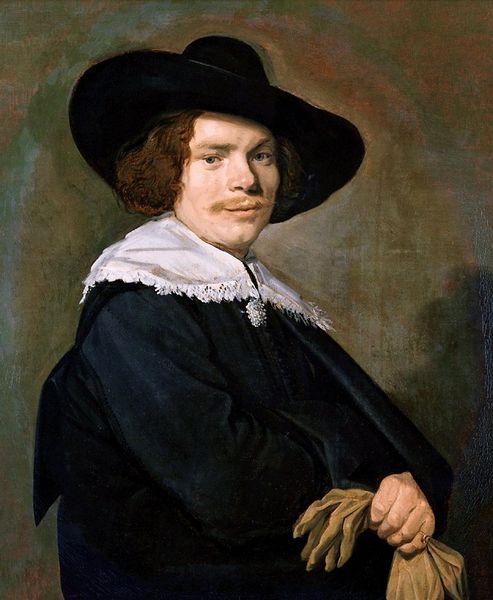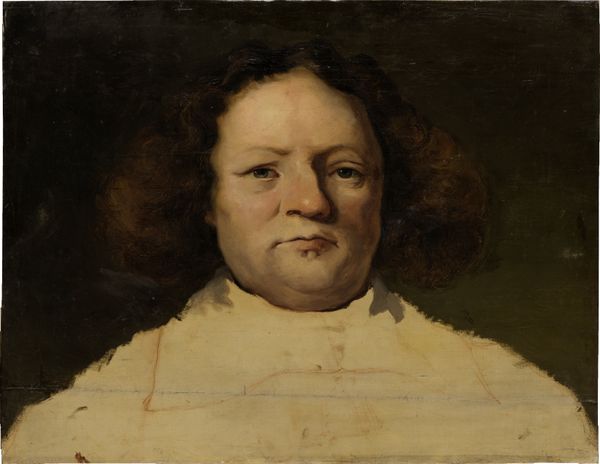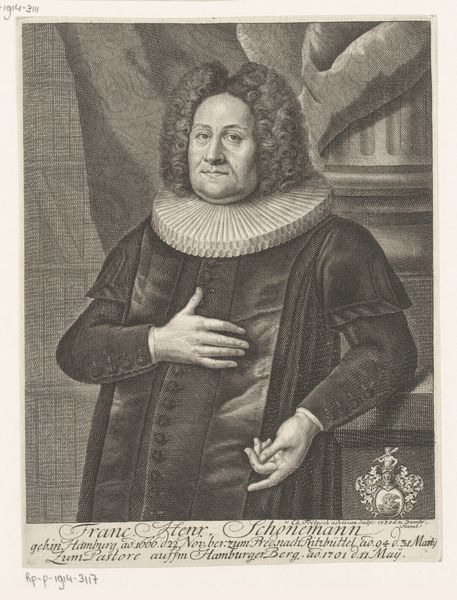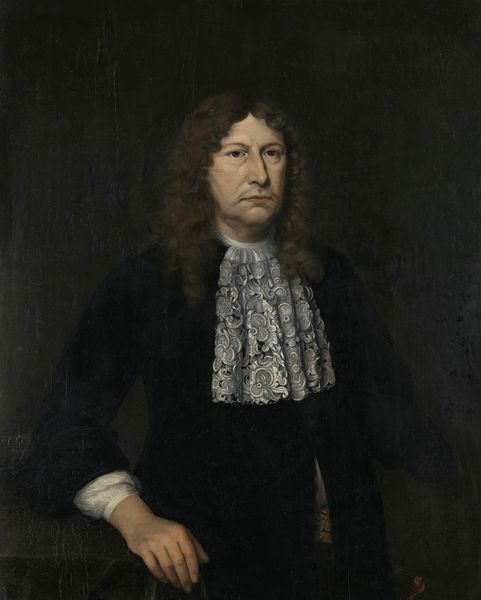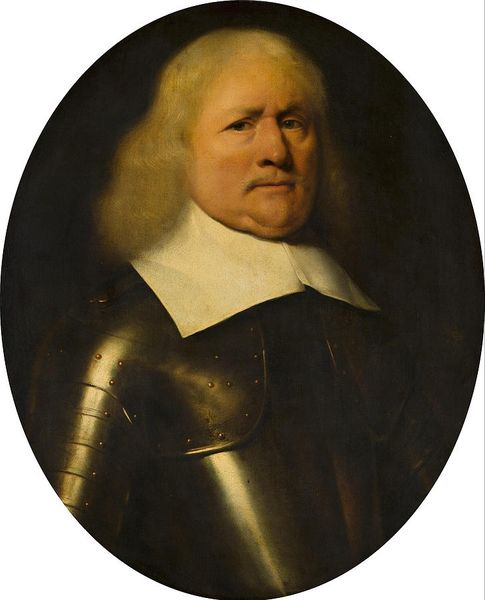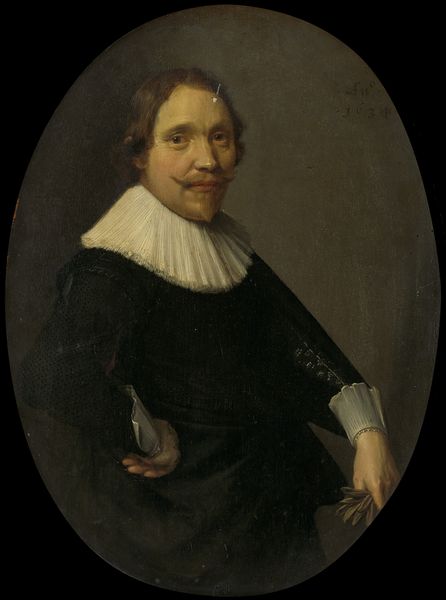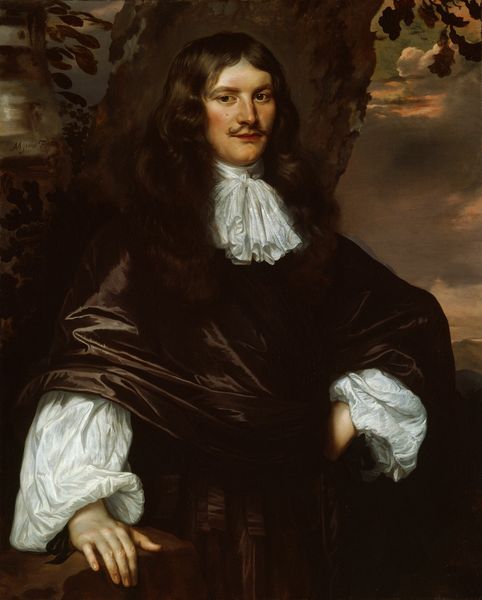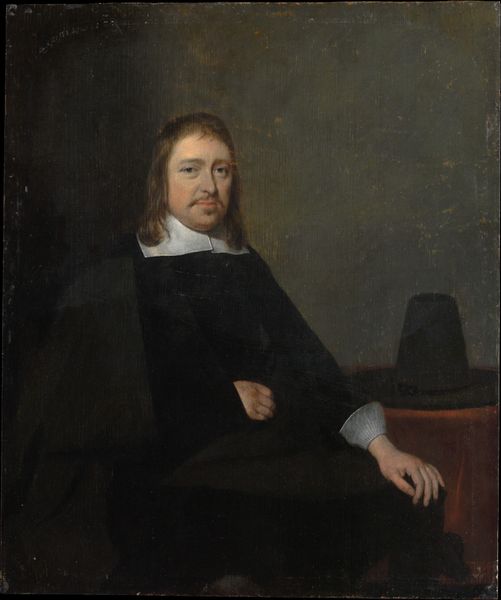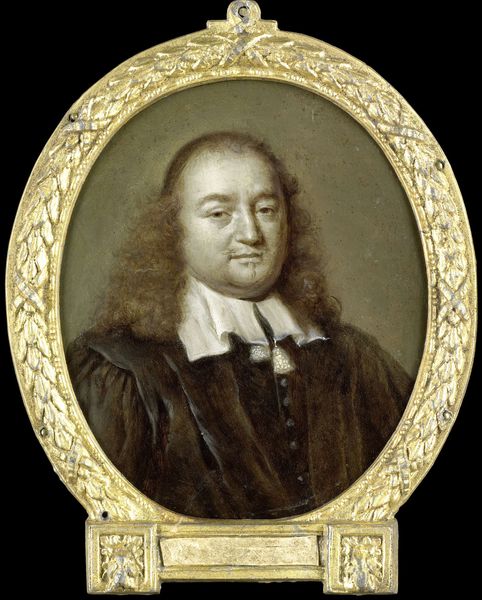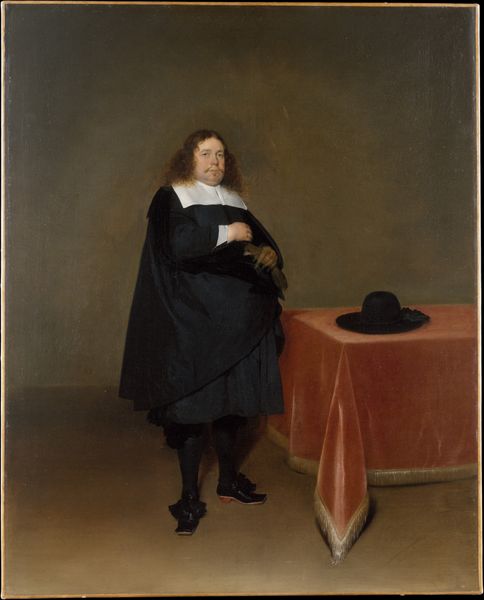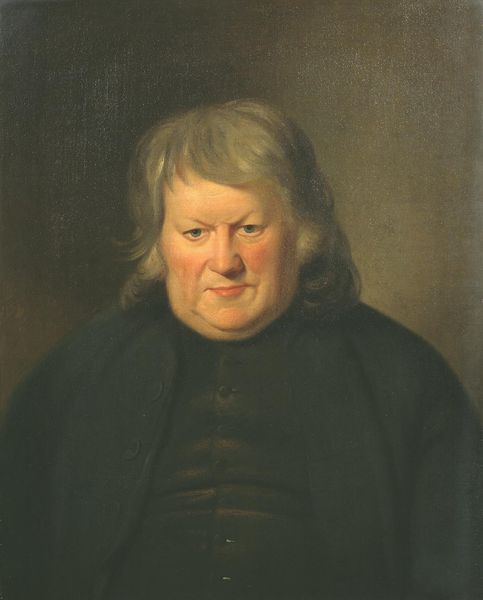
painting, oil-paint
#
portrait
#
baroque
#
painting
#
oil-paint
#
figuration
#
realism
Dimensions: 72.0 x 61.5 cm
Copyright: Public Domain
Curator: Let's consider this “Portrait of a Man,” rendered in 1659 by Ferdinand Bol. It’s oil on canvas and resides here at the Städel Museum. Editor: My immediate impression is one of subdued power. The sitter's expression seems impenetrable, almost confrontational. The dark velvet fabric practically absorbs all the light. Curator: That’s a good point about the velvet, its presence suggests considerable affluence, right? Think about the process of acquiring velvet at that time. Its association with nobility and higher social strata cannot be understated; this was likely a commissioned work for someone with substantial financial capital. The means of creating such detail in velvet is equally astonishing given that they didn't have advanced machinery. Editor: Absolutely. Bol's technical skill is definitely evident. The level of detail in the lace ornamentation, for example. But I am thinking about the power dynamics that shaped its existence. Portraits, then and now, played a crucial role in shaping perceptions and legitimizing authority, especially in places such as Amsterdam with burgeoning mercantile success and new modes of showing authority. Who was this man, and how was he intending to project his status to contemporaries and, importantly, to posterity? Curator: Well, given the quality and sheer presence of the fabric in the composition, the creation of the illusion through layering paint must have taken several attempts to perfect! The availability and cost of pigments surely influenced Bol’s choices and, in turn, the portrait's perceived value and message. It becomes a question of what kind of message that textile might send to different viewers in different contexts. Editor: That's it, isn't it? I’m really interested in these public commissions, as such. We think of Amsterdam's Golden Age as a time of democratized imagery, yet this kind of portrait reveals the mechanisms through which an emerging class perpetuated certain ideals, even ideas of restraint in visual expression and posing, that helped solidify their power in civic arenas. Curator: A final thought, for me, lies in the interplay between skill, availability, and impact of the oil paints. The ways that they captured the materiality of fabric and flesh in 1659 still hold fascination for contemporary eyes looking into a very different social reality. Editor: Agreed. And, thinking about the portrait within its social, political and even institutional life over time, "Portrait of a Man" offers insight into 17th century identities as well as the ongoing negotiations that determine which histories are made visible in the first place.
Comments
No comments
Be the first to comment and join the conversation on the ultimate creative platform.

